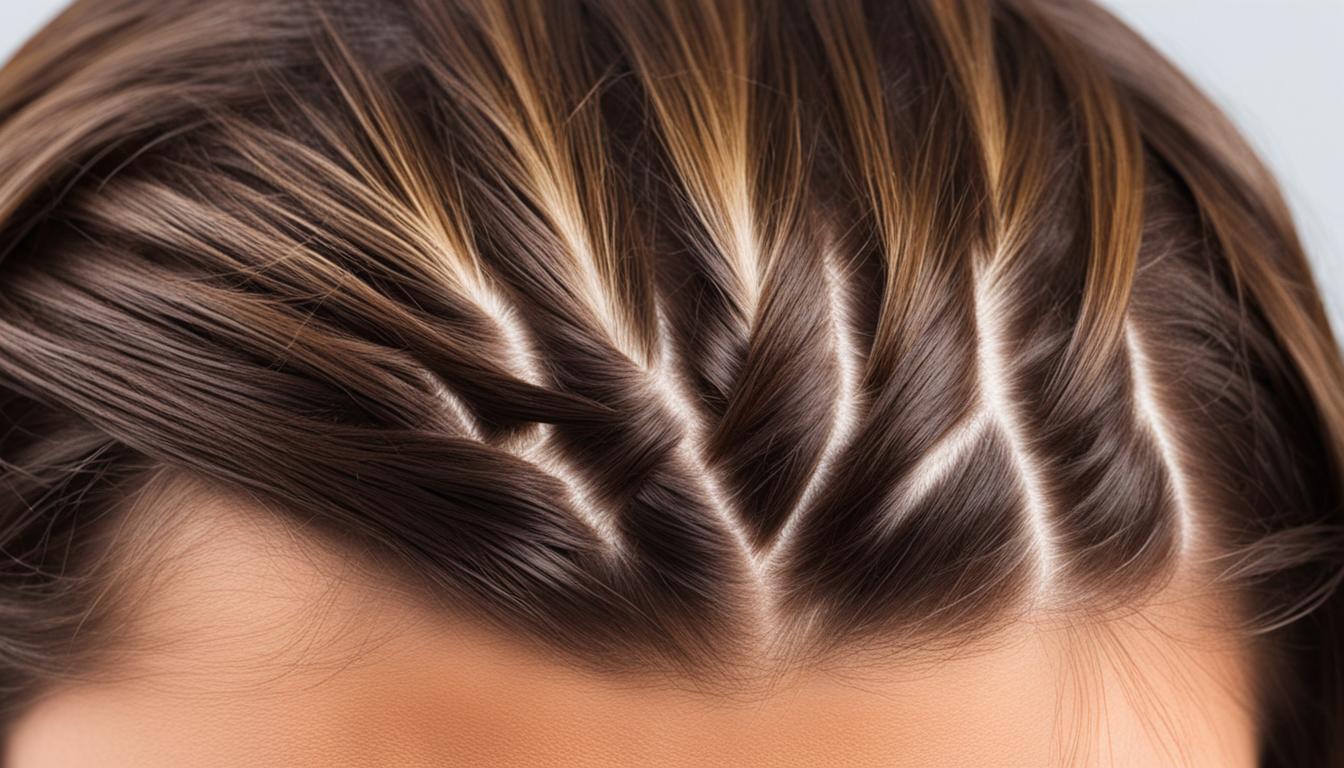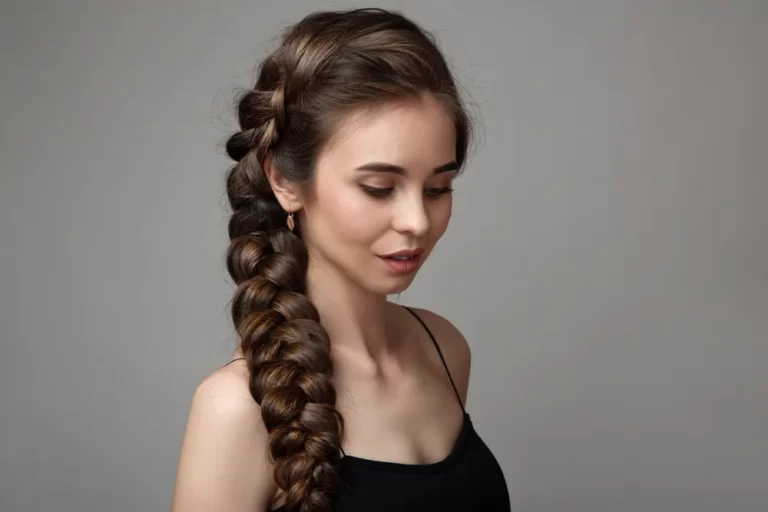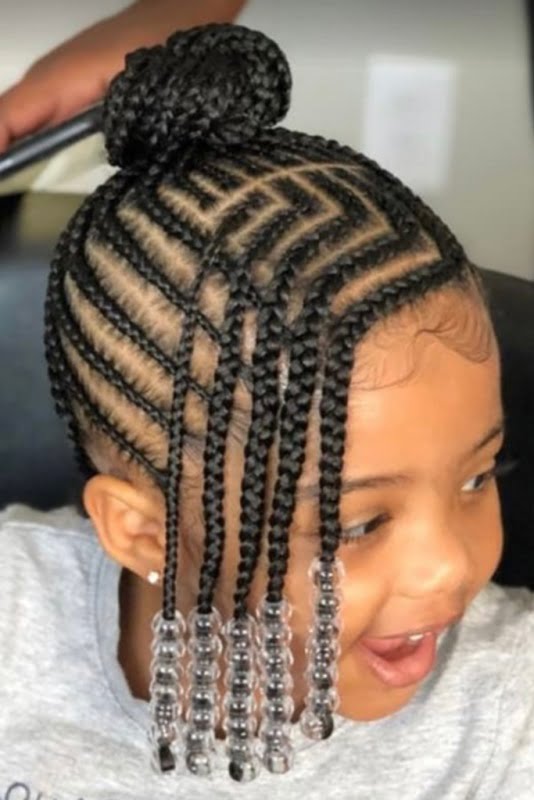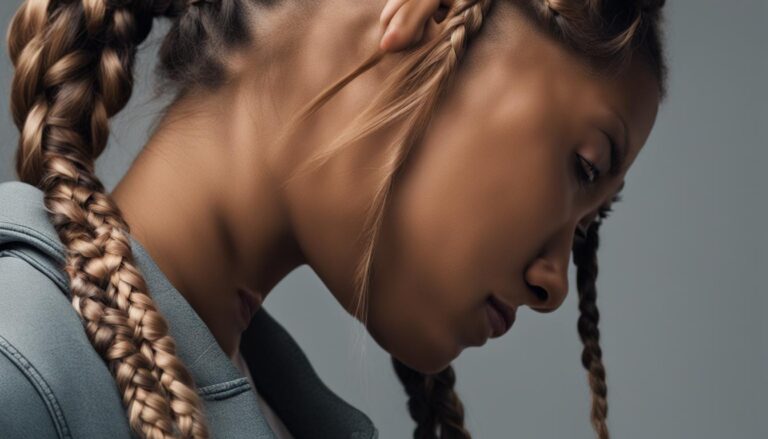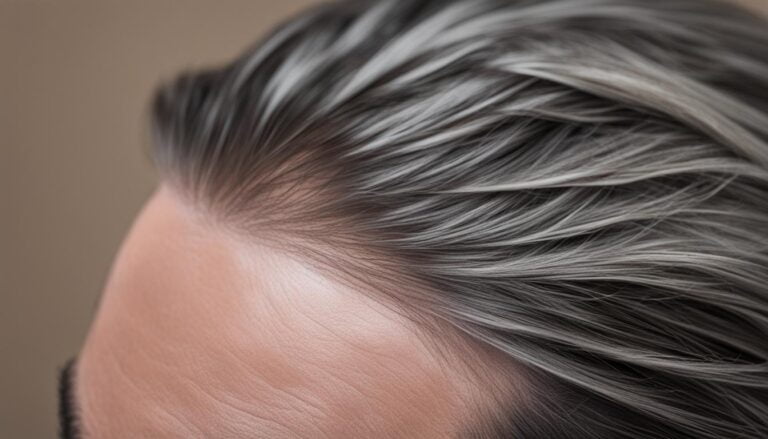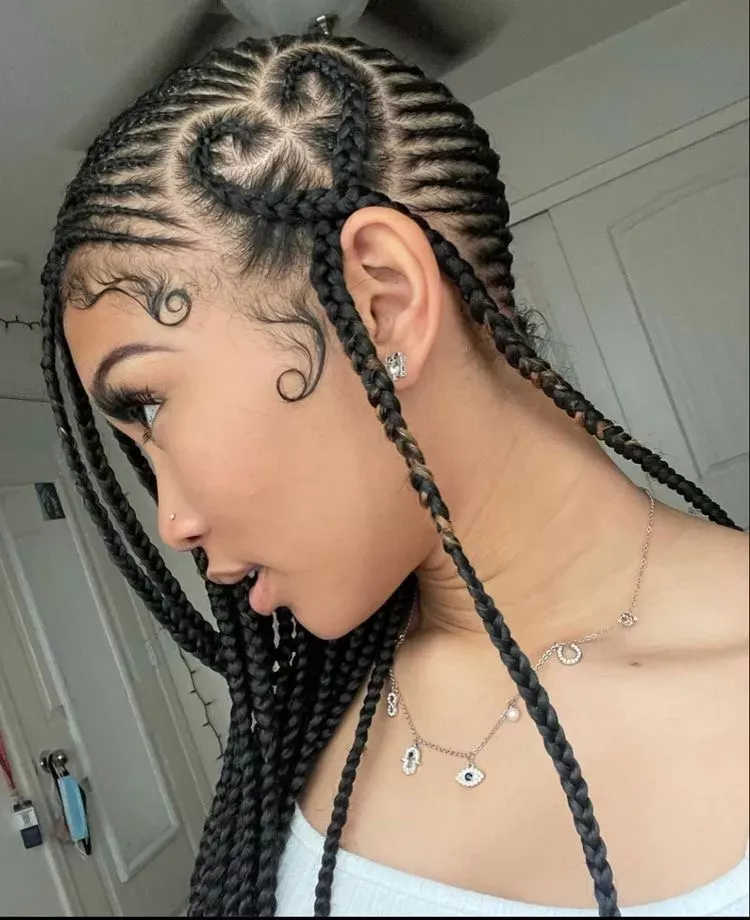Why does my hair feel thin after braids?
Braids have become a popular protective style, but many people experience hair thinning after taking them out. This can be caused by leaving braids in too long, having braids installed too tightly, being unaccustomed to natural hair, or not properly caring for the natural hair while in braids. These factors can lead to hair loss and a thinner appearance.
Key Takeaways:
- Leaving braids in for an extended period can cause hair loss.
- Getting braids installed too tightly can lead to tension-related hair loss.
- Unfamiliarity with natural hair may result in a temporary feeling of thinness.
- Neglecting to care for the hair while in braids can lead to breakage and hair loss.
- Properly removing braids can minimize hair loss.
Leaving Braids in Too Long
Leaving braids in for an extended period can have negative effects on your hair, including hair loss and thinning. When braids are kept in for too long, shed hairs, product buildup, and scalp residues accumulate, creating tension and damage when trying to remove the buildup. This can lead to excessive hair loss and a compromised hairline. To prevent braid-related hair loss, it is important to remove your braids in a timely manner and take proper care of your natural hair while it is in braids.
When it’s time to take down your braids, start by unraveling them from the ends rather than pulling them out forcefully. Working your way up gradually will minimize the risk of hair breakage and shedding. If you find it difficult to unravel the entire braid, it is recommended to gently cut a few inches off the ends to reduce the amount of hair that needs to be unraveled.
“It is important to remove braids in a timely manner to prevent excessive hair loss and maintain the health of the hair.”
Additionally, saturating your hair with water and applying conditioner can help loosen the braids and make them easier to remove. Use a wide-tooth comb or a detangling brush to gently remove shed hairs and knots. Once the braids are completely out, give your hair some extra care and moisture to restore its health. This can be done through deep conditioning treatments and regular trims to remove any split ends.
Preventing Braid-Related Hair Loss
To prevent braid-related hair loss in the future, make sure to avoid leaving braids in for extended periods. Generally, it is recommended to keep braids in for no longer than 6-8 weeks. Additionally, communicate with your stylist to ensure your braids are not causing excessive tension or pain. Requesting a looser braid installation can help minimize the risk of traction alopecia and hair thinning. Finally, maintain a consistent hair care routine, including regular cleansing, moisturizing, and protecting your natural hair while it is in braids.
Braids Installed Too Tightly
Getting braids installed too tightly can lead to tension-related hair loss known as traction alopecia. This occurs when the braids exert excessive pulling force on the hair strands and roots, causing damage and eventual hair thinning, especially around the hairline. It is essential to ensure open communication with your stylist to prevent this issue. During the braiding process, if you experience discomfort or pain, it is crucial to speak up and ask for adjustments to be made to reduce tension.
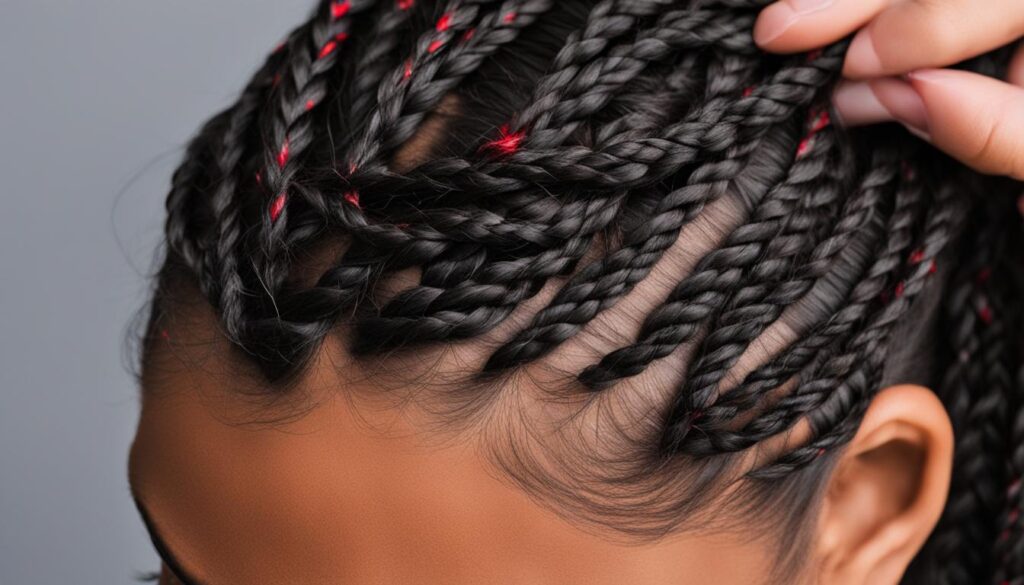
Preventing traction alopecia starts with proper braiding techniques. It is important for the stylist to refrain from braiding the hair too tightly, especially near the delicate hairline. Additionally, avoiding excessive tension when securing the braids can significantly reduce the risk of traction alopecia. Opting for larger, looser braids can also help distribute the weight more evenly and minimize damage to the hair follicles.
Regularly caring for your hair while it is in braids is also crucial for preventing traction alopecia. Moisturizing the scalp and hair with a lightweight, non-greasy oil can help maintain the health of the hair follicles and reduce the risk of breakage. Avoiding hairstyles that put excess strain on the hair, such as high ponytails or tight updos, can also help preserve the integrity of the hair and prevent further damage.
Tips for preventing traction alopecia:
- Communicate with your stylist to ensure the braids are not too tight and causing discomfort.
- Choose larger, looser braids to reduce tension on the hair.
- Moisturize the scalp and hair regularly with lightweight oils.
- Avoid hairstyles that put excessive strain on the hair.
By being aware of the potential risks and taking appropriate preventive measures, you can enjoy the benefits of braided hairstyles without compromising the health of your hair. Remember, it’s essential to prioritize your hair’s well-being and make informed choices when it comes to styling and maintaining your natural locks.
Unfamiliarity with Natural Hair: Adjusting to the Weight and Thickness
After removing braids, it is common to experience a change in the weight and thickness of your hair. This can be attributed to the addition of extra hair during the braiding process. When the braids are taken out, it may initially feel like there is hair missing, creating a sense of thinness. However, there is no need to worry. This feeling is temporary and will subside as you get used to the weight and thickness of your natural hair.
It’s important to remember that braids can add volume and weight to your hair, especially if synthetic or extension hair is used. So when you remove the braids, the sudden decrease in weight can make your hair feel thinner than it actually is. But rest assured, with time and proper care, your natural hair will regain its normal density.
To help ease the adjustment period, consider incorporating these tips into your post-braid routine:
- Be patient: Give yourself time to adjust to your natural hair without the added extensions or synthetic hair. It may take a few weeks for your hair to return to its normal state.
- Moisturize regularly: Keep your hair hydrated by using a moisturizing conditioner or leave-in treatment. This will help maintain its health and prevent dryness, which can make the hair feel thinner.
- Experiment with styling: Embrace your natural hair by trying out different hairstyles and techniques that showcase its texture and volume. This will help you become more familiar and confident with your natural hair.
- Consult a professional stylist: If you’re struggling with the adjustment or have concerns about the health of your hair, consider seeking advice from a professional stylist who specializes in natural hair. They can provide personalized tips and recommendations.
Remember, the temporary feeling of thinness is just a part of the transition process. Embrace your natural hair, take care of it, and soon you’ll feel confident and comfortable with its weight and thickness.
Neglecting Natural Hair Care
Proper care for your natural hair while it is in braids is vital to prevent breakage and hair loss. Neglecting to clean, hydrate, and remove product buildup can lead to weakened strands and excessive shedding when the braids are eventually taken out. Here are some essential tips for maintaining the health and thickness of your hair while it is in braids:
- Keep your scalp clean: Use a gentle clarifying shampoo to cleanse your scalp regularly. Dilute the shampoo with water to avoid excessive dryness. Massaging your scalp while shampooing can help remove dirt and buildup.
- Moisturize regularly: Hydrate your hair and scalp with a water-based leave-in conditioner or a lightweight moisturizer. Focus on the ends of your hair, as they tend to be more prone to dryness and breakage.
- Avoid heavy products: While in braids, it is best to steer clear of heavy oils and creams that can weigh down your hair or cause buildup. Opt for light, non-greasy products that will nourish your hair without leaving residue.
- Protect your hair at night: Before bedtime, cover your braids with a satin bonnet or use a satin pillowcase. This helps to prevent friction and keeps your hair moisturized while you sleep.
- Gently detangle: When removing tangles or knots, be gentle to avoid unnecessary hair breakage. Use a wide-tooth comb or a detangling brush to carefully work through any knots starting from the ends and working your way up.
By following these simple yet effective hair care tips, you can ensure that your natural hair remains healthy, strong, and vibrant, even after taking out your braids.
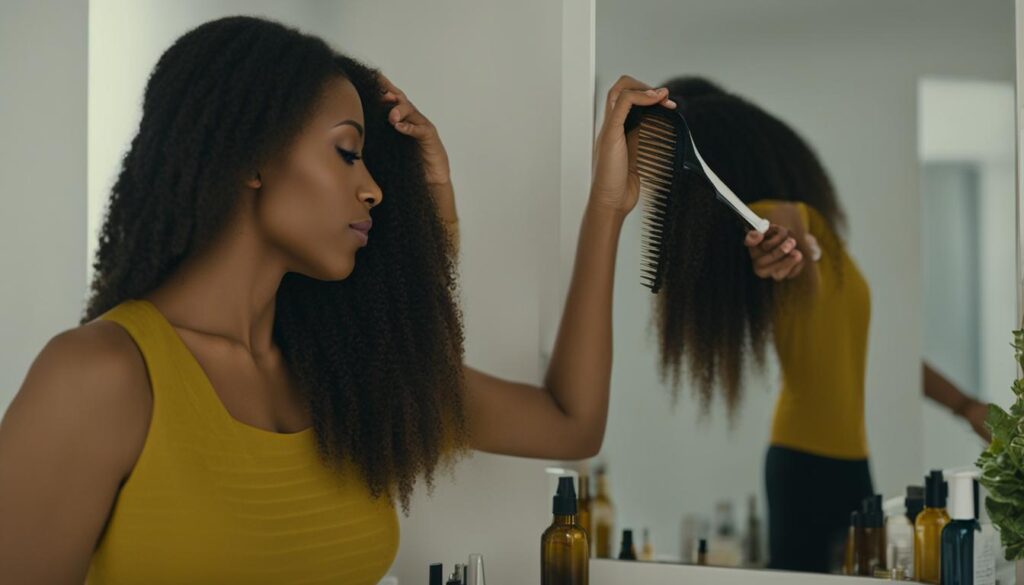
How to Safely Remove Braids
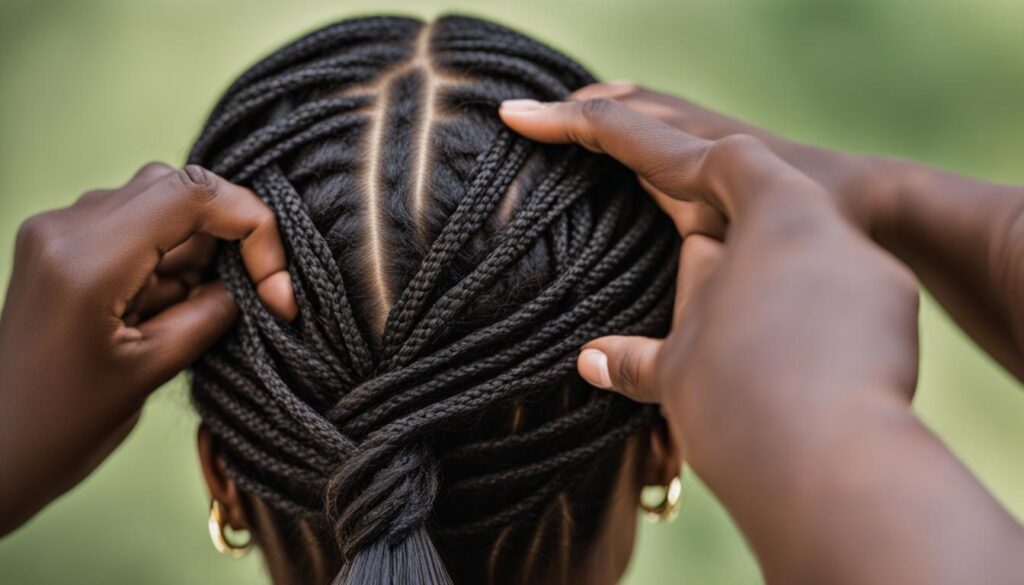
Properly removing braids is essential to minimize hair loss and maintain the health of your hair. Follow these steps for a gentle hair takedown:
1. Start from the ends
Begin by unraveling the braids from the ends, rather than trying to pull them out from the roots. This method reduces the risk of tugging and causing unnecessary hair breakage. Take your time and be patient to avoid any discomfort or pain.
2. Trim the ends
If the ends of your braids are excessively tangled, consider cutting off a few inches. This will reduce the amount of hair that needs to be unraveled, making the process easier and faster. Use hair cutting scissors and make small, careful cuts.
3. Saturate with water and conditioner
Before detangling, saturate your hair with water and apply a generous amount of conditioner. This will help soften the hair, making it easier to remove any knots or tangles. Allow the conditioner to sit for a few minutes to further soften the hair.
4. Gently detangle with a wide-tooth comb or detangling brush
Using a wide-tooth comb or a detangling brush, start combing through your hair from the ends and work your way up. Be gentle and patient, taking care to untangle any knots or shed hairs. Avoid pulling or tugging on the hair to prevent breakage.
Remember, the goal is to remove the braids without causing damage or excessive hair loss. Take your time, be gentle, and prioritize the health of your hair throughout the process.
Normal Hair Loss After Braids
When you take out your braids, it’s natural to notice a significant amount of hair shedding. This shedding can be alarming, but it’s important to understand that it is a normal part of the hair growth cycle. On average, a person loses about 100 hairs per day, and these hairs may not be noticeable until the braids are removed.
During the time your hair is in braids, the shed hairs become trapped within the braids. When you finally remove them, all the shed hairs are released at once, creating the illusion of excessive hair loss. However, this shedding is just your hair’s way of renewing itself.
It’s also essential to keep in mind that not all hair that sheds was caused by the braids. The hair that sheds after taking out your braids would have naturally shed regardless if you had braids or not. So, as long as your hair looks and feels normal, there is no need to worry about the amount of hair loss. It is within a healthy range.
Expert Tip:
“Don’t panic when you see a lot of hair shedding after removing your braids. Remember that the hair is just going through its natural shedding process. Instead, focus on nourishing and taking care of your hair to support healthy growth.”\n- Haircare Specialist, Dr. Emma Davis
In summary, shedding after braids is a common occurrence. The amount of hair shed may seem alarming, but it is within a healthy range and a natural part of the hair growth cycle. To maintain healthy hair, focus on proper hair care routines such as regular cleansing, moisturizing, and avoiding excessive tension on the hair strands. With proper care, your hair will continue to grow and thrive, even after enjoying the benefits of braids.

Conclusion
After learning about the potential causes of hair thinning after braids, it’s clear that taking preventive measures is crucial in protecting the health and thickness of our hair. By understanding the importance of timely braid removal, avoiding tight installations, familiarizing ourselves with natural hair, and maintaining proper hair care, we can minimize the risk of hair thinning.
When it comes to braided hairstyles, it’s essential to prioritize the health of our hair. Taking out braids in a timely manner prevents the buildup of shed hairs, product residues, and scalp residues, reducing tension and damage during the removal process. Communicating with our stylist and requesting a looser installation can help prevent tension-related hair loss known as traction alopecia.
Getting used to the weight and thickness of our natural hair after removing braids is a normal adjustment period. It’s important to remember that any temporary feelings of hair thinning will subside as we get accustomed to our natural hair. Additionally, neglecting proper hair care while in braids can lead to breakage and excessive hair loss, so it’s crucial to continue caring for our natural hair by cleaning, hydrating, and removing product buildup.
In conclusion, by implementing these preventive measures, we can protect our hair from thinning after braids. Prioritizing the health and thickness of our hair will not only ensure beautiful and thriving locks, but also help us maintain confidence and embrace the versatility of braided hairstyles.
FAQ
Why does my hair feel thin after braids?
Braids can cause hair thinning if they are left in for too long, installed too tightly, or if proper hair care is neglected while in braids.
What happens if I leave braids in for too long?
Leaving braids in for an extended period can lead to hair loss due to accumulated shed hairs, product buildup, and scalp residues. It is important to remove braids in a timely manner to prevent excessive hair loss.
Can braids installed too tightly cause hair thinning?
Yes, if braids are installed too tightly, it can lead to tension-related hair loss known as traction alopecia. This can cause hair thinning, particularly around the hairline. It is important to communicate with your stylist to ensure the braids are not causing pain and to request a looser installation to prevent hair damage and thinning.
Why does my hair feel different after taking out braids with added hair?
If you have added extra hair to your braided style, taking out the braids can result in a sudden weight change, making it feel like there is hair missing. This feeling is temporary and will subside as you get used to the weight and thickness of your natural hair. It is a normal adjustment period that should not be a cause for concern.
How does neglecting natural hair care affect hair thinning after braids?
Neglecting to clean, hydrate, and remove product buildup while in braids can lead to breakage and excessive hair loss when the braids are removed. It is important to properly care for your natural hair while in braids to maintain its health and thickness.
How can I safely remove braids without hair loss?
To safely remove braids, start by unraveling them from the ends and gradually work your way up. It can be helpful to cut a few inches off the ends to reduce the amount of hair that needs to be unraveled. Saturate the hair with water and apply conditioner for easy detangling. Use a wide-tooth comb or detangling brush to gently remove shed hairs and knots. Finally, give the hair some extra care and moisture to restore its health.
Is it normal to experience hair loss after taking out braids?
Yes, it is normal to experience some hair loss when taking out braids. On average, a healthy person loses around 100 hairs per day. However, these loose hairs may not be noticed until the braids are removed, resulting in a pile of shed hair. As long as the hair feels and looks normal, the amount of hair loss is within a healthy range.
How can I protect my hair from thinning after braids?
To protect your hair from thinning after braids, ensure you remove them in a timely manner, communicate with your stylist about the tightness of the installation, get accustomed to the weight of your natural hair, properly care for your natural hair while in braids, and safely remove the braids without causing damage. Prioritizing the health of your hair and making informed choices can help prevent hair thinning after braids.

